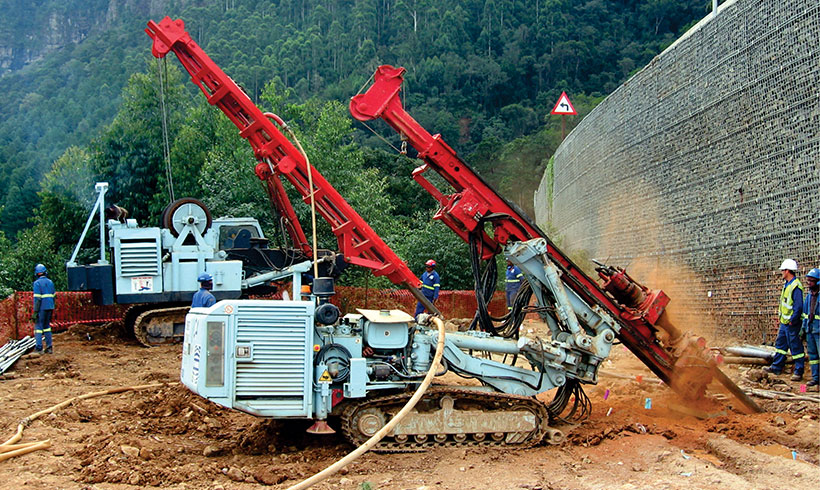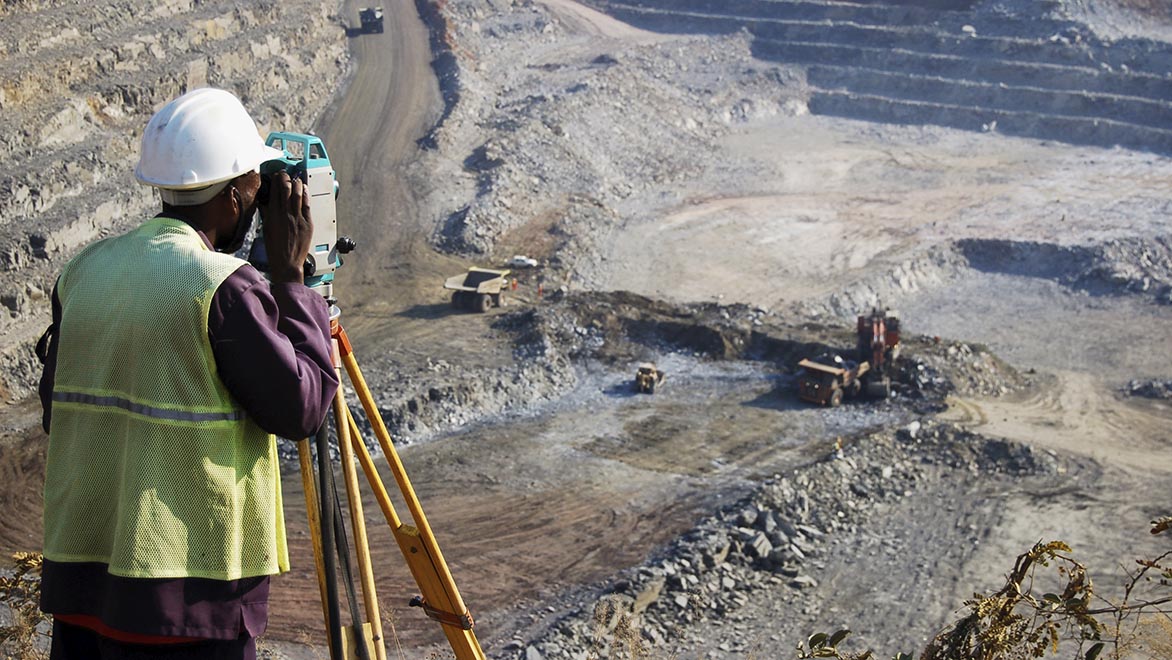How Geotechnical Engineering For Construction Projects can Save You Time, Stress, and Money.
How Geotechnical Engineering For Construction Projects can Save You Time, Stress, and Money.
Blog Article
What Does Geotechnical Engineering For Construction Projects Do?
Table of ContentsEverything about Geotechnical Engineering For Construction ProjectsSome Known Facts About Geotechnical Engineering For Construction Projects.Unknown Facts About Geotechnical Engineering For Construction Projects6 Easy Facts About Geotechnical Engineering For Construction Projects ExplainedThe Single Strategy To Use For Geotechnical Engineering For Construction ProjectsGeotechnical Engineering For Construction Projects for DummiesThe Greatest Guide To Geotechnical Engineering For Construction Projects
Concepts and Practice of Ground Enhancement. Ground Renovation Concepts And Applications In Asia. Design analysis in rock auto mechanics.Cengage Learning, Stamford, 666 p. Atkinson, J., 2007. The auto mechanics of dirts and structures. Taylor & Francis, N.Y., 442 p. Drifting Offshore Wind Turbines: Reactions in a Sea state Pareto Ideal Styles and Financial Analysis, P. Sclavounos et al., October 2007. Nicholson, D, Tse, C and Dime, C. (1999 ). The Observational Method in ground engineering principles and applications.
5 Easy Facts About Geotechnical Engineering For Construction Projects Shown
Research laboratory and area testing plays a crucial function in this process. By removing samples from the planet's subsurface and applying a suite of tests, geotechnical designers can predict the practices of dirt layers and assess their viability for various building and construction efforts. The essence of geotechnical design in civil engineering can not be overemphasized, attributable to numerous aspects: The initial action in any type of geotechnical research study includes identifying the dirt type at the building and construction website.
The foundation acts as the bedrock of any type of building and construction project. Choosing the ideal foundation type is a choice that hinges on the comprehensive evaluation given by geotechnical engineering.

Geotechnical site investigation is an essential step in the planning and implementation of any kind of construction project. It involves the collection and analysis of information connected to the physical residential properties of dirt and rock underneath a recommended construction site. This information is important for the design and building and construction of secure, steady, and lasting structures.
The 4-Minute Rule for Geotechnical Engineering For Construction Projects
In this blog site, we will certainly explore the relevance of geotechnical website investigation, its different components, and just how it benefits construction tasks. Geotechnical website investigation, likewise referred to as subsurface expedition, involves a collection of activities targeted at figuring out the soil, rock, and groundwater problems at a building and construction site. The main objectives are to determine possible geotechnical threats, examine the engineering properties of subsurface products, and provide suggestions for the design and building of structures, maintaining walls, and various other frameworks.
The workdesk research aids in recognizing potential geotechnical problems and preparing the succeeding fieldwork. This includes observing the topography, drain patterns, existing structures, plants, and any type of indications of instability or erosion.
Geotechnical Engineering For Construction Projects Things To Know Before You Buy
Superficial test pits are dug deep into to directly observe and sample the dirt and rock. This technique is beneficial for examining the top layers of the subsurface and recognizing near-surface threats. Non-invasive geophysical approaches, such as seismic refraction, ground-penetrating radar (GPR), and electrical resistivity tomography (ERT), are used to map subsurface problems and find anomalies.
Soil and rock examples gathered during the area investigation undergo lab testing to identify their physical and mechanical properties. Typical research laboratory tests include grain dimension evaluation, Atterberg limitations, compaction examinations, triaxial shear tests, and loan consolidation examinations. These examinations offer important information for geotechnical analysis and layout. The data collected from the desk study, site reconnaissance, area examination, and laboratory screening are evaluated and analyzed to develop a detailed understanding of the subsurface problems.
The primary benefit of geotechnical website examination is guaranteeing the security and security of structures. By comprehending the subsurface conditions, engineers can create structures and other structural aspects that can hold up against the loads and environmental pressures they will certainly go through. This minimizes the risk of settlement, subsidence, and structural failing.
How Geotechnical Engineering For Construction Projects can Save You Time, Stress, and Money.
As an example, understanding dirt features can lead the option of excavation methods, dewatering methods, and ground renovation measures. This makes certain effective and safe building and construction methods. Geotechnical site examinations are usually needed by building codes and guidelines. Sticking to these requirements makes certain compliance with lawful and security criteria, staying clear of prospective lawful obligations and project hold-ups.
This information is very useful for project supervisors, architects, and specialists in establishing realistic routines, spending plans, and contingency plans. Geotechnical Engineering for Construction Projects. Skyscraper in a Coastal AreaIn a seaside city, a high-rise domestic building was prepared on a website with thought loose sand deposits Recommended Reading and a high water table. An in-depth geotechnical investigation, including borehole boring, CPT, and geophysical studies, was conducted
An Unbiased View of Geotechnical Engineering For Construction Projects
Based upon these searchings for, the foundation design was modified to consist of deep heap structures expanding into stable strata, and ground enhancement techniques, such as vibro-compaction, were implemented to mitigate liquefaction threats. This aggressive technique made sure the security and stability of the structure while staying clear of pricey post-construction remediation. Infrastructure Development on a Sloping TerrainA major infrastructure project, entailing the building and construction of a freeway and bridges, was intended on a hilly surface with steep slopes.

The Leaning Tower of Pisa (Italy), a famous architectural wonder, is well known for its unintended tilt from significant geotechnical issues. The tower's foundation was improperly developed to handle the soft, unpredictable soil beneath it, bring about unequal settlement and its distinctive lean. Our globe is dotted with remarkable facilities projectsfrom towering skyscrapers to stretching bridgesall standing testimony to the advancement of the different building equipment and techniques available.
Geotechnical design is a specialized field within civil design that concentrates on studying the habits of planet products. This branch digs deep right into the groundinvestigating how the dirt, rock, and groundwater at a construction site can influenceand be affected bythe infrastructure that we set up on and into them. Prior to a single brick is laid or a concrete structure put, geotechnical engineers probe right browse this site into the earthgathering essential data concerning the website's soil composition, rock framework, and groundwater degrees.
Geotechnical Engineering For Construction Projects Things To Know Before You Buy

is a device made use of to assess the stability and load-bearing capability of heaps throughout installation, leveraging the principle of wave breeding. It maximizes construction efficiency by offering real-time analyses, hence ensuring safe and efficient heap structures. One of the practical applications of geotechnical engineering involves deciding and executing the best techniques for foundation building.
Stack driving stands for even more than the simple act of placing architectural components right into the ground. On the contrary, it is a thoroughly managed process of transferring a structure's load past the less secure dirt layers better to the surfacedown Recommended Site to the extra significant strata that exist below. When it comes to pile driving, consider how geotechnical designers adeptly utilize this technique to evenly disperse the framework's weight.
Report this page